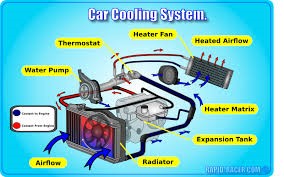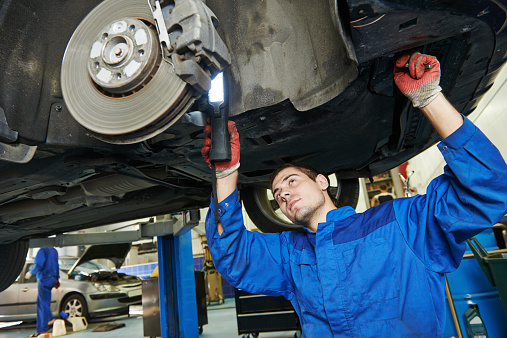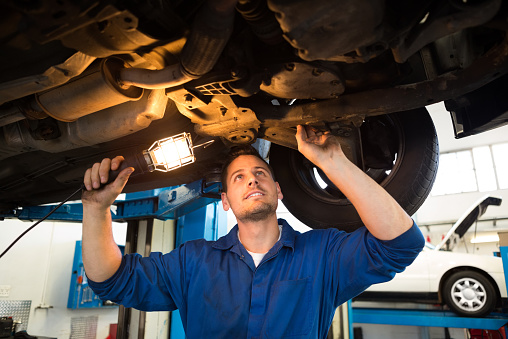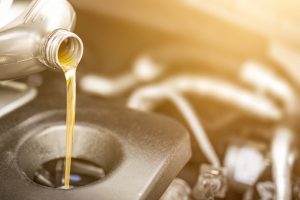 If you’re a car owner, it’s critical to know the difference between auto maintenance and auto repair. Both of these things are important to the overall performance, but they have different functions.
If you’re a car owner, it’s critical to know the difference between auto maintenance and auto repair. Both of these things are important to the overall performance, but they have different functions.
Maintenance is regular service that is required for your vehicle while auto repairs are performed when your vehicle is not functioning properly. Your owner’s manual will have a list of maintenance schedules with recommendations on what needs to be done and when. The most common regular maintenance, that everyone has heard of, is oil changes. Yet that’s not the only service that’s crucial for your car’s performance. Here’s a list of common auto maintenance needed to keep your car in tip-top shape:
- Oil Change
- Battery
- Brakes
- Tires
- Power-Steering Fluid
- Fuel Filter
- Coolant
- Engine Belts & Timing Belts
- Spark Plugs
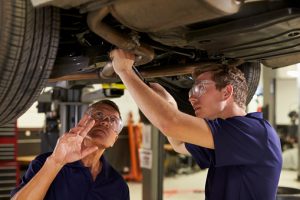 That’s quite a list! It seems like a lot of things you need to manage, but many of these services are simple procedures that your auto repair facility can complete that day or with an appointment. Many customers delay maintenance for various reasons. They may think it’s unnecessary, they may be too busy to bring their vehicle in, they may want to delay paying for auto services, or they might not realize that doing maintenance now can save money in the long run by avoiding repairs. It’s OK if you don’t know the difference between a spark plug and an oil cap – as long as you bring your vehicle to a reputable shop for regular maintenance. In a nutshell: performing regular auto maintenance helps keep your ride running smoothly and can prevent costly repairs down the road.
That’s quite a list! It seems like a lot of things you need to manage, but many of these services are simple procedures that your auto repair facility can complete that day or with an appointment. Many customers delay maintenance for various reasons. They may think it’s unnecessary, they may be too busy to bring their vehicle in, they may want to delay paying for auto services, or they might not realize that doing maintenance now can save money in the long run by avoiding repairs. It’s OK if you don’t know the difference between a spark plug and an oil cap – as long as you bring your vehicle to a reputable shop for regular maintenance. In a nutshell: performing regular auto maintenance helps keep your ride running smoothly and can prevent costly repairs down the road.
Maintenance is regular service that will help prolong the life of your vehicle, while auto repair is when a part or fluid is not performing and needs to be fixed.
Without proper maintenance, pricey repairs might be needed. For example, changing a timing belt is a straightforward procedure that is usually done around 60,000 miles. If you don’t replace your timing belt, it may break at the worst time, leaving you stranded at the side of the road. Even worse, it can do hundreds of dollars of damage to your engine. One way to avoid an expensive repair bill is to keep up on scheduled maintenance. Of course, even with regular maintenance, your car might need repairs at some point in its lifetime.
Whether your car is running properly and needs routine auto maintenance, or your car is malfunctioning and needs repairs, Central Avenue Automotive can help. Our goal is to provide high quality workmanship on all auto maintenance and repairs so that your vehicle is running smoothly for years to come. Call us to schedule your appointment today!
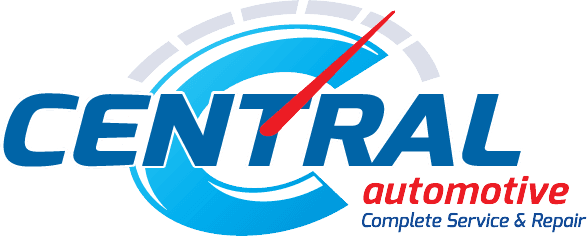
 When your car needs repairs, it’s always tempting to consider purchasing a new vehicle. It’s tough to pay money to fix your older model, leaving you wondering – is it better to spend less money more often on repairs over time, or spend lots of money all at once on a new car? Well, it’s more complicated than that. Every situation is different, and your particular answer will depend on a number of factors that are unique to you and your car. In general, it’s almost always better for your budget to repair your existing vehicle rather than buy a new one. It’s very unlikely that the price of repairs will outstrip the cost of a new car, unless your current ride is very old and/or very run down. We’ll go into more detail about the breakdown of auto repair versus buying a new car below.
When your car needs repairs, it’s always tempting to consider purchasing a new vehicle. It’s tough to pay money to fix your older model, leaving you wondering – is it better to spend less money more often on repairs over time, or spend lots of money all at once on a new car? Well, it’s more complicated than that. Every situation is different, and your particular answer will depend on a number of factors that are unique to you and your car. In general, it’s almost always better for your budget to repair your existing vehicle rather than buy a new one. It’s very unlikely that the price of repairs will outstrip the cost of a new car, unless your current ride is very old and/or very run down. We’ll go into more detail about the breakdown of auto repair versus buying a new car below. A recent survey of auto technicians and shop owners has shown that 58% are aware of a problem with the low-speed pre-ignition events in car models with turbocharged gasoline direct-injection engines, such as those made by
A recent survey of auto technicians and shop owners has shown that 58% are aware of a problem with the low-speed pre-ignition events in car models with turbocharged gasoline direct-injection engines, such as those made by 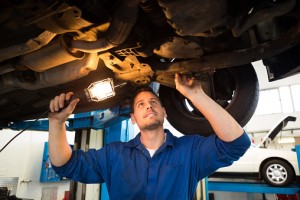 We often receive calls from customers looking for an estimate. They are concerned about a fee to test why their vehicle’s check engine light came on, especially when the car is running fine. Their neighbor or Dad or Grandpa came over and offered advice and a diagnosis of what he thought it might be.
We often receive calls from customers looking for an estimate. They are concerned about a fee to test why their vehicle’s check engine light came on, especially when the car is running fine. Their neighbor or Dad or Grandpa came over and offered advice and a diagnosis of what he thought it might be.